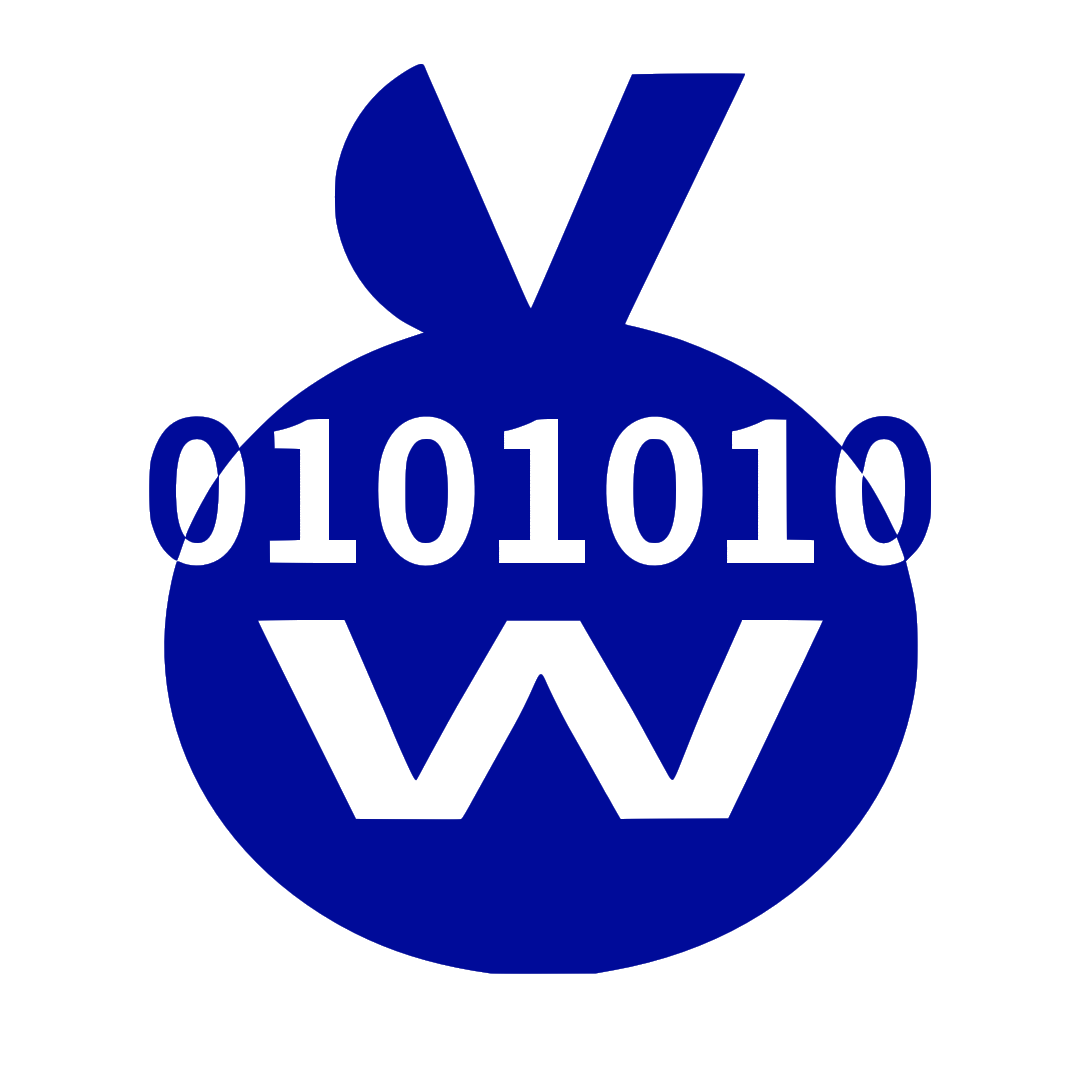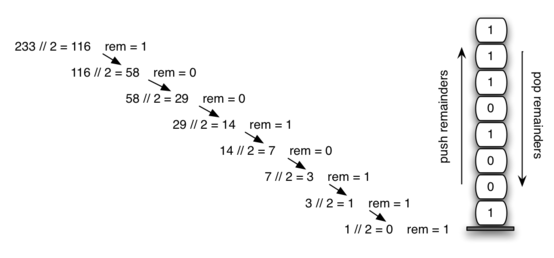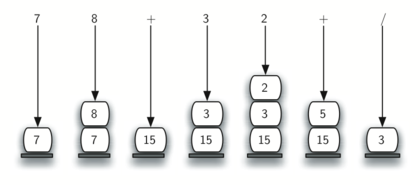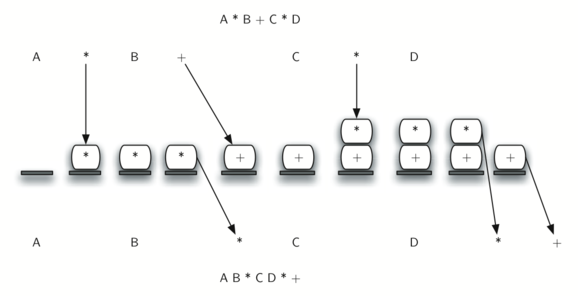1. 栈
栈(Stack)是限制插入和删除操作只能在一个位置进行的表,该位置是表的末端,称为栈的顶(top)。栈的基本操作有PUSH(入栈)和POP(出栈)。栈又被称为LIFO(后入先出)表。
1.1 栈的实现
class Stack(object): def __init__(self): self.stack=[] def isEmpty(self): return self.stack==[] def push(self,item): self.stack.append(item) def pop(self): if self.isEmpty(): raise IndexError,'pop from empty stack' return self.stack.pop() def peek(self): return self.stack[-1] def size(self): return len(self.stack)
1.2 栈应用
1.2.1 检查程序中成对的符号
程序的语法错误经常是由缺少一个符号造成的。可用栈来检查符号是否成对。做一个空栈,如果字符是开放符号('({[')则将其push栈中。如果符号是个闭合符号(')]}'),则当栈空时报错,对应'()}'的错误。否则,将栈pop,如果弹出的符号不是对应的开放符号,则报错,对应'(}'的错误。文件末尾,如果栈为空,则报错,对应'({}'的错误。
def match(i,j):
opens='([{'
closes=')]}'
return opens.index(i)==closes.index(j)
def syntaxChecker(string):
stack=Stack()
balanced=True
for i in string:
if i in '([{':
stack.push(i)
elif i in ')]}':
if stack.isEmpty():
balanced=False
break
else:
j=stack.pop()
if not match(j,i):
balanced=False
break
if not stack.isEmpty():
balanced=False
return balanced
1.2.2 进制转换
十进制转换二进制:把十进制转成二进制一直分解至商数为0。从最底左边数字开始读,之后读右边的数字,从下读到上。
来自《Problem Solving with Algorithms and Data Structures》的图片:
def decimal_to_bin(dec):
stack=Stack()
cur=dec
while cur>0:
a=cur%2
cur=cur/2
stack.push(a)
binstr=''
while not stack.isEmpty():
binstr+=str(stack.pop())
return binstr
1.2.3 后缀记法
后缀记法(postfix),使用一个栈,见到一个数时入栈,遇到一个运算符时就作用于从栈弹出的两个元素,将结果弹入栈中。
(7+8)/(3+2)可以写作7 8 + 3 2 + /
来自《Problem Solving with Algorithms and Data Structures》的图片:
中缀到后缀的转换:当读到一个操作数的时候,放到输出中。读到操作符(+,-,*,/)时,如果栈为空,则压入栈中,否则弹出栈元素放到输出中直到发现优先级更低的元素为止。读到'(',压入栈中,读到')',弹出栈元素并发到输出中直到发现'('为止。在末尾,将栈元素弹出直到该栈变成空栈。
来自《Problem Solving with Algorithms and Data Structures》的图片:
def infixtoPostfix(infix):
a={}
a['*']=3
a['/']=3
a['+']=2
a['-']=2
a['(']=1
stack=Stack()
post=''
for i in infix:
if i not in a and i!=')':
post+=i
elif i=='(':
stack.push(i)
elif i==')':
top=stack.pop()
while top!='(':
post+=top
top=stack.pop()
else:
while not stack.isEmpty() and a[i]<=a[stack.peek()]:
post+=stack.pop()
stack.push(i)
while not stack.isEmpty():
post+=stack.pop()
return post
def postfixExp(postfix):
stack=Stack()
postlist=postfix.split()
for i in postlist:
if i not in '+-*/':
stack.push(i)
else:
a=stack.pop()
b=stack.pop()
result=math(i,b,a)
stack.push(result)
return stack.pop()
def math(x,y,z):
if x=='+':
return float(y)+float(z)
if x=='-':
return float(y)-float(z)
if x=='*':
return float(y)*float(z)
if x=='/':
return float(y)/float(z)
2 队列
队列(queue)也是表,使用队列时插入和删除在不同的端进行。队列的基本操作是Enqueue(入队),在表的末端(rear)插入一个元素,还有出列(Dequeue),删除表开头的元素。
class Queue(object):
def __init__(self):
self.queue=[]
def isEmpty(self):
return self.queue==[]
def enqueue(self,x):
self.queue.append(x)
def dequeue(self):
if self.queue:
a=self.queue[0]
self.queue.remove(a)
return a
else:
raise IndexError,'queue is empty'
def size(self):
return len(self.queue)




您可以选择一种方式赞助本站
支付宝扫一扫赞助
微信钱包扫描赞助
赏